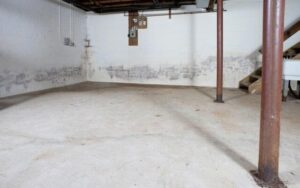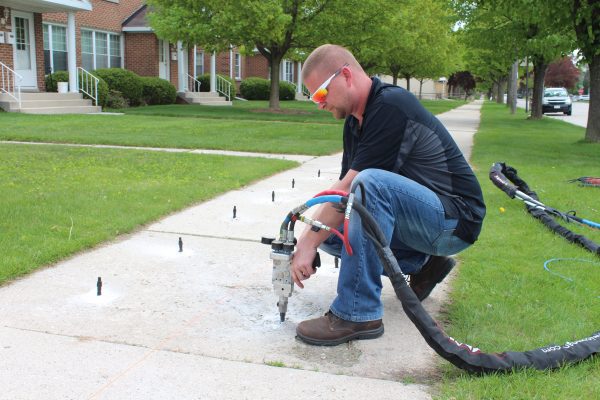Water leaking into your basement
- HOME
- /
- Water leaking into your basement
Unwelcome Intruders: The Dangers of Water Leaking into Your Basement and How to Safeguard Your Home
The basement, often an overlooked space in many homes, serves as a crucial foundation and utility hub. However, this subterranean area is particularly susceptible to water leaks, a common and potentially damaging issue that can compromise the structural integrity of your home. In this comprehensive article, we’ll explore the various causes of water leaking into basements, the potential consequences for your property and health, and effective strategies to identify, prevent, and address water leakage.
I. Understanding the Causes of Basement Water Leaks:
A. Poor Foundation Sealing:
One of the primary culprits behind basement water leaks is inadequate sealing of the foundation. Over time, the foundation can develop cracks and gaps, allowing water to seep into the basement. This can occur due to natural settling, soil erosion, or changes in temperature that cause the foundation to expand and contract.
B.Insufficient Drainage:
Ineffective drainage around the foundation can lead to water pooling, especially during heavy rainfall or snowmelt. Improper grading, clogged gutters, or a lack of proper drainage systems can contribute to water accumulating around the foundation, finding its way into the basement through any available entry points.
C. Plumbing Issues:
Leaking pipes or plumbing fixtures within the basement itself can be a direct source of water intrusion. Even minor leaks, if left unaddressed, can result in significant water damage over time. Regular inspection and maintenance of plumbing systems are crucial to prevent water-related issues.
D. Cracks in Walls and Floors:
As a home ages, the structural components, including basement walls and floors, may develop cracks. These cracks create pathways for water to enter the basement, particularly during periods of heavy precipitation or when the water table rises.
II. The Consequences of Basement Water Leaks:
A. Structural Damage:
Water leaking into the basement poses a direct threat to the structural integrity of your home. Continuous exposure to moisture can weaken the foundation, compromise load-bearing walls, and lead to deterioration of supporting structures. Over time, this can result in costly repairs and pose a serious risk to the stability of the entire building.
B. Mold and Mildew Growth:
Water leaks create a damp environment that fosters the growth of mold and mildew. Mold spores can become airborne, affecting indoor air quality and potentially leading to respiratory issues, allergies, and other health problems. The presence of mold also necessitates expensive remediation efforts to eliminate the infestation and prevent its recurrence.
C. Damage to Belongings:
Basements often serve as storage spaces for valuable belongings. Water leaks can damage furniture, electronics, clothing, and other items stored in the basement, leading to financial losses and emotional distress.
D. Increased Energy Costs:
Water leaks can compromise the insulation in your home, leading to increased energy consumption. Wet insulation is less effective in regulating temperature, causing heating and cooling systems to work harder to maintain a comfortable indoor environment. This results in higher energy bills for homeowners.
III. Signs of Water Leakage in Your Basement:
Recognizing the early signs of water leakage is crucial for addressing the issue before it escalates. Common indicators include:
A. Damp or Musty Odor:
A persistent musty or damp odor in the basement is often an early sign of water intrusion. This odor is a result of mold and mildew growth in response to elevated moisture levels.
B. Visible Water Stains:
Stains or discoloration on walls, floors, or ceilings may indicate water seepage. These stains can vary in color and intensity, depending on the source and duration of the water exposure.
C. Efflorescence:
Efflorescence appears as white, chalky deposits on basement walls and surfaces. It occurs when water evaporates, leaving behind mineral deposits. While efflorescence itself may not be harmful, it signals a history of water intrusion.
D. Mold Growth:
The presence of mold on surfaces or in corners of the basement is a clear indication of excess moisture. Mold can take on various colors, including black, green, or brown, and may appear fuzzy or slimy.
E. Cracks in Walls or Floors:
Visible cracks in basement walls or floors suggest structural issues that may be allowing water to penetrate. Monitoring these cracks and addressing them promptly is essential to prevent further damage.
IV. Preventive Measures to Safeguard Your Basement:
A. Regular Inspections:
Schedule regular inspections of your basement, especially during seasons of heavy rainfall or snowmelt. Look for signs of water leakage, such as dampness, stains, or mold growth. Early detection allows for prompt intervention and prevents the issue from escalating.
B. Proper Sealing of Foundation:
Ensure that your home’s foundation is properly sealed to minimize the risk of water intrusion. Seal any visible cracks, gaps, or openings in the foundation using appropriate materials, such as epoxy or hydraulic cement.
C. Adequate Drainage:
Improve the drainage around your home by maintaining clean gutters, extending downspouts away from the foundation, and ensuring proper grading to direct water away from the house. Consider installing a sump pump if your area is prone to flooding.
D. Waterproofing:
Invest in basement waterproofing measures to create a protective barrier against water intrusion. This may include applying waterproof coatings to basement walls, installing a drainage system, and using sealants on vulnerable surfaces.
E. Landscape Management:
Pay attention to the landscaping around your home. Ensure that flower beds, trees, and shrubs are positioned in a way that encourages water to flow away from the foundation rather than accumulating around it.
V. Addressing Water Leaks in Your Basement:
A. Identify the Source:
When you notice signs of water leakage, the first step is to identify the source. This may involve a thorough inspection of the exterior and interior of your home, including the foundation, walls, and plumbing systems.
B. Repair Foundation Cracks:
Address any visible cracks in the foundation promptly. Depending on the size and severity of the cracks, you may use epoxy or hydraulic cement to seal them effectively.
C. Install a Sump Pump:
A sump pump is a valuable addition to basements, especially in flood-prone areas. It helps to redirect water away from the foundation, preventing basement flooding and water damage.
D. Use Sealants and Waterproofing Products:
Apply waterproof sealants to vulnerable surfaces, such as basement walls and floors. Consider using waterproofing paints or coatings to create an additional layer of protection against water intrusion.
E. Professional Assistance:
For complex water leakage issues or situations where the source is challenging to identify, seeking professional assistance is advisable. Waterproofing specialists and structural engineers can provide expert insights and implement effective solutions tailored to your specific situation.
Water leaking into your basement is more than just a minor inconvenience; it’s a potential threat to the structural integrity of your home and the health of its occupants. Recognizing the causes, signs, and consequences of water leakage empowers homeowners to take proactive measures to safeguard their homes. Regular inspections, preventive measures, and prompt interventions when issues arise are key to ensuring a dry and secure basement, preserving the longevity of your property and the well-being of your family.
Contact the Professionals at Sundahl Waterproofing Today! (914) 834 9212
Sundahl Waterproofing is proudly powered by WordPress

